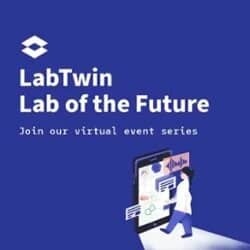A Senior Research Scientist in the In Vivo Cardiac Regeneration group at a Top Pharma Company recently used LabTwin and shared her experience. She collaborates with other teams to study heart regeneration following myocardial infarction in mice and pigs. More specifically, she performs complex surgical interventions to transplant human cells into pig hearts. She explained her workflow to us, and outlined how LabTwin’s voice-activated digital lab assistant helps her team capture data while they work.
The Challenges of Documenting In Vivo Work
When performing surgery on a pig, I often work together with four to five different people in the surgery room and the procedure takes five to eight hours. During the surgery, the pace is very fast while constant observations need to be recorded. That is why I have several dedicated notetakers when performing in vivo experiments. One notetaker follows the surgery itself and records any observation made by the surgeon, such as the position of the transplanted cells. Another notetaker takes notes about the electrocardiogram (ECG), and a third person monitors the anesthesia. Precise injection times and consequences of any administered drugs also need to be recorded. Then, over subsequent months, follow-up measurements and samples are regularly collected, and some treatments are administered daily. At the end of the experiment, different tissues are harvested for gene expression analysis. This creates a lot of data which need to be recorded and shared between different team members.
“An overwhelming amount of data is captured during animal studies, especially large animal studies.” Cardiac Regeneration Scientist, Top 10 Pharma Company
As one project could last up to nine months, I can work on 15 different projects in parallel. We are constantly accumulating data which need to be well-organized and easily accessible.

Data Accessibility Issues
All handwritten notes taken during a surgery must be scanned and uploaded online. This can mean up to 17 scans per animal. Retrieving information later on is a challenge on two levels. Firstly, because no automatic search is possible, and secondly because reading someone else’s handwriting is sometimes difficult, especially when this person was in a hurry.
“Before LabTwin, if I wanted to look for an information from a study, I would search the ID number of the animal and then read through the scanned notes.”
Interruptions During Experiments
During monitoring of an animal with tests such as blood glucose measurements, all measurements, together with the time at which the sample is taken, must be written down. This requires an interruption to the procedure which creates more stress for the animal and takes more time to finish the whole process.
Data Silos
I work with other teams who administer treatments to the same animal. Often, important information such as whether the pig spat out the medicine or had to be re-dosed is difficult to capture and may not be communicated to me. We use emails between teams to transfer the list of samples collected, constantly updating the most recent version of the list. I need a lot of data back from the other teams in order to make correlations with my own data and I would like to have one searchable system where all the data is gathered.
Early Attempt at Lab Digitization
My company understands the importance of digitization and launched a very early initiative to implement lab informatics systems in laboratories. However, the first software we tested failed to meet demand.
“It did not fit the needs of my team at all. We were not involved in the development of the software and in the end, it was not flexible enough for discovery work and not easily searchable.”
Why LabTwin Raises Hopes
I need a digital system that gathers a large amount of data in one place, whether it is during hectic surgeries or sample collection.
“We need a product developed together with professionals that have a deep understanding of lab needs and use cases, and with hands-on learning and assistance.”
I was very excited to be part of the first scientists in our company selected to use LabTwin in the lab. I placed LabTwin on the desk in the middle of the surgery room and allowed the whole surgery team to speak to LabTwin in order to record observations or unusual measurements.
“For example, someone could say: Avocado (the wake word), Rat number 2 has been given compound X.”
As each LabTwin note includes a timestamp, there is no need to keep an eye on the clock. LabTwin collects every note from different sources in a chronological order. This made it much easier to reconstruct the procedure flow. We also used LabTwin to record sample collection data. Instead of interrupting handling of the animal, values could be entered into tables simply by voice. I found LabTwin very promising and enjoyed giving my feedback to the LabTwin team about different features of the app. I will continue using LabTwin and will be joined by other in vivo team members.
Conclusions
LabTwin is very useful during in vivo procedures as it allows seamless handling of fast-paced experiments. We can easily track the timeline of events and all data is automatically digitalized in one central place. Different team members can generate and share reports, helping to reduce data silos.











